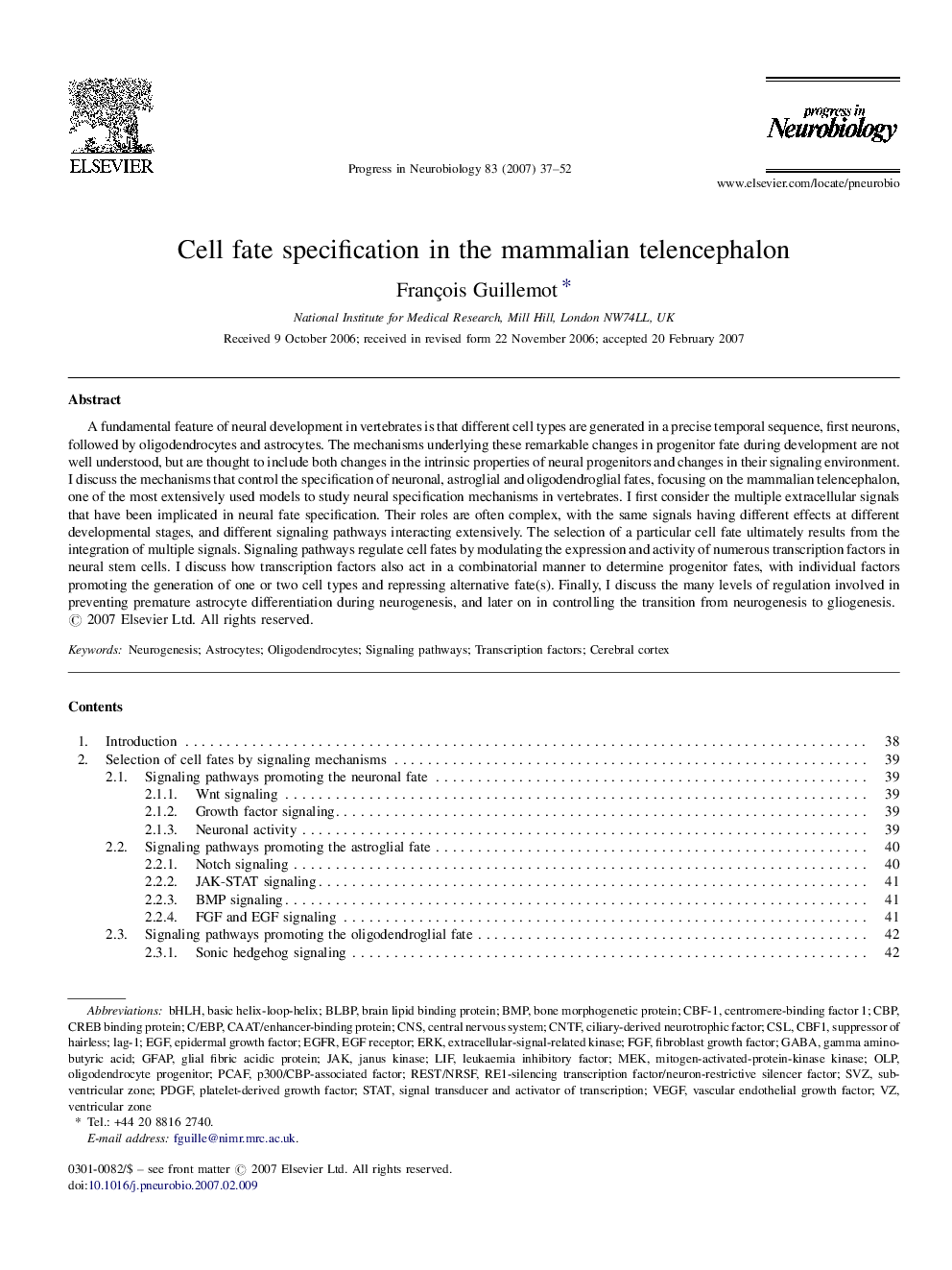| Article ID | Journal | Published Year | Pages | File Type |
|---|---|---|---|---|
| 4353958 | Progress in Neurobiology | 2007 | 16 Pages |
A fundamental feature of neural development in vertebrates is that different cell types are generated in a precise temporal sequence, first neurons, followed by oligodendrocytes and astrocytes. The mechanisms underlying these remarkable changes in progenitor fate during development are not well understood, but are thought to include both changes in the intrinsic properties of neural progenitors and changes in their signaling environment. I discuss the mechanisms that control the specification of neuronal, astroglial and oligodendroglial fates, focusing on the mammalian telencephalon, one of the most extensively used models to study neural specification mechanisms in vertebrates. I first consider the multiple extracellular signals that have been implicated in neural fate specification. Their roles are often complex, with the same signals having different effects at different developmental stages, and different signaling pathways interacting extensively. The selection of a particular cell fate ultimately results from the integration of multiple signals. Signaling pathways regulate cell fates by modulating the expression and activity of numerous transcription factors in neural stem cells. I discuss how transcription factors also act in a combinatorial manner to determine progenitor fates, with individual factors promoting the generation of one or two cell types and repressing alternative fate(s). Finally, I discuss the many levels of regulation involved in preventing premature astrocyte differentiation during neurogenesis, and later on in controlling the transition from neurogenesis to gliogenesis.
